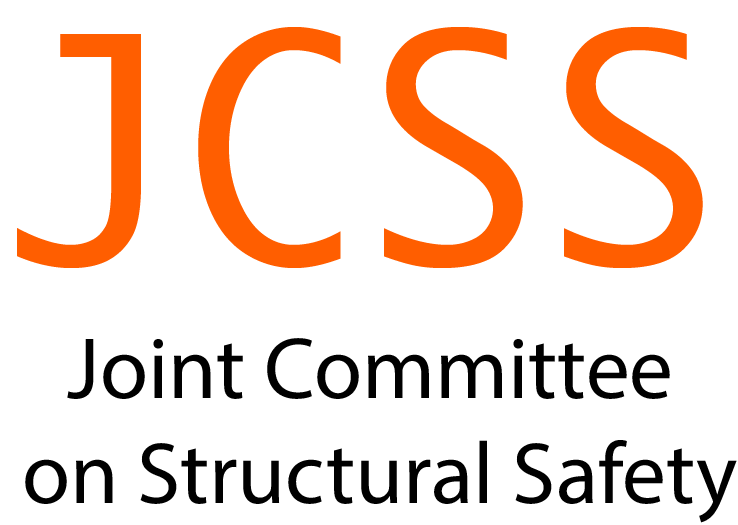Session II - Semi-Probabilistic Methods¶
Moderator: Robby Caspeele
Aim of the Session¶
In order to enable a simple and straightforward assessment procedure for existing structures, the development of appropriate partial factors to be used in a semi-probabilistic verification format such as the one in the Eurocodes forms a stepping stone towards a more widely used, objective and coherent assessment process for existing structures by practitioners. In this regard, the objectives of the session are to provide an overview of current practices, practical appraisals and critical opinions with respect to the use of partial factor formats for the assessment of existing structures, as well as to highlight the challenges and the potential for further developments in standards, practice and in research.
fib TG 3.1 Developments Concerning Semi-Probabilistic Format¶
by Miroslav Sykora, Klokner Institute, Czech Republic and Dimitris Diamantidis, OTH Regensburg, Germany
The fib Task Group 3.1 (TG3.1) focuses on semi- and fully-probabilistic reliability assessment of existing concrete structures, including specification of appropriate target reliability levels. This contribution presents the TG proposals that are intended for implementation in the fib Model Code 2020. The target reliability levels for assessment are presented first; they are related to a reference period of one year and they are lower compared to design levels, as also recommended in ISO 2394 and in the JCSS documents. The reasons for selecting an annual reference period (accompanied with modification of sensitivity factors alpha) are discussed. Fixed partial factors for the three specified consequence classes are then proposed. The fixed values may be updated in individual assessment cases. The resulting difference between the new design based on the current Eurocodes and the assessment with MC 2020 are highlighted in generic example cases.
Determination of Characteristic Concrete Compressive Strength of Existing Structures According to EN 13791¶
by Christian Glock and Rabea Sefrin, TU Kaiserslautern, Germany
The assessment of existing structures is becoming increasingly important, because in the sense of resource-efficient handling of existing buildings, conversion should be given priority over demolition and new construction. At European level, EN 13791:2019 replaced the 2007 standard (EN 13791:2007) for the determination of the in-situ concrete compressive strength. The standard approach given in EN 13791:2007 produces unreliable results for existing structures, especially for a small size of samples (Approach B). For this reason, it was necessary to adapt the approach for small sample sizes at European level. In Germany, the approach B has already been modified and introduced with DIN EN 13791/A20. Especially for small sample sizes of drill cores (3 ≤ n ≤ 7), the introduction of EN 13791:2019 results in significant changes in the determination of the characteristic in-situ concrete compressive strength. However, there is currently no background information available on the statistical robustness of the new methods, which is why this was checked within the framework of the research project DBV 317. The presentation will give an overview about these results.
Semi-Probabilistic Format for the Assessment of Existing Bridges: Concepts and Challenges¶
by André Orcesi, CEREMA, France
The presentation will focus on the partial factor format applied to the assessment of existing bridges and the fundamental differences to be considered when compared to the design stage. The application of design-orientated methods to the assessment of existing structures often leads to a high degree of conservatism, which may have severe economic, environment and socio-political consequences when it results in satisfactory structures being condemned as unsafe, thereby leading to an unnecessary investment of resources in replacement or retrofitting, with its associated dismantling. Also, the potentially available information about geometry, material properties, loading and environmental conditions is not the same for new and existing structures and this implies to take into account different levels of uncertainty. The presentation will briefly present the on-going work of the IABSE TG1.3, currently investigating how a semi-probabilistic format can be used for assessment of existing bridges, in connection with JCSS and fib Task Group 3.1.
Potential and Challenges of the Design Value Approach¶
by John Sørensen, Aalborg University, Denmark and Jochen Köhler, NTNU, Norway
The Design Value Format approach is included in e.g. ISO 2394:2015 and EN 1990:2002 as a simplified method to estimate partial factors for loads and resistances. The key assumption is that standardized alpha-values equal to 0.7 and 0.8 for loads and resistances can be used to estimate the partial factors. Furthermore, a similar method is sometimes suggested for the assessment of existing structures. In this presentation a number of limitations to the use of this approach is presented and discussed. This includes the a) in some applications the standardized alpha-values are too low and results in too low partial factors although the standards indicate that alpha-values equal to 1.0 can be applied if needed; b) in other applications the alpha-values are too large resulting in too safe and uneconomic structures requiring too much material; c) if the Design Value Format method is used to estimate partial factors for resistance variables then the method should also be used for load variables and visa versa; d) climatic loads are generally modelled by a time-dependent and a time-independent contribution which are difficult to include in the method and implying that the formulas given in e.g. EN 1990:2002 cannot be used. The presentation illustrates the above concerns and discuss possible improvements.
